Author: Phloating Man
Monero Testnet Live
What is this?
This live environment was created so people can easily test out Monero Testnet v7 which includes…
The following have already been done for you…
- Compiling from source
- Blockchain download via the Remote Testnet Node
- Mining testnet coins via the Public Testnet Wallet
Demo Video
Here’s a demo video transferring testnet coins with unimportant/low priority from the Public Testnet Wallet to a new testnet wallet with a subaddress, then looking it up on this Testnet Explorer to prove sending…
Download
- monero-testnet-live-2.0.iso (~1.3GB | 64-bit)
- SHA256: bae5fc6c286b2e3f8ded35d5cafe8b178dd47ec4fa0b10ac06a71b81c12e7ff4
After downloading the iso file…
- Use it with your favorite live USB creator. I prefer Etcher.
- Use it with your favorite virtual machine software. I prefer VirtualBox.
Important
- Use only for testnet. Do not use for mainnet
- The sudo password is ‘monero’
- Double-click the scripts and choose ‘Run in Terminal’
- Choose ‘Display’ instead if you want to see the commands in the script beforehand
- The Public Testnet Wallet password is ‘publictestnet’
- Please do not drain this wallet. Just transfer a few coins to your own testnet wallet.
- All progress including testnet wallets you created are lost after shutdown/reboot unless you backup
- Report CLI wallet bugs/issues here
How was this created?
- I installed Ubuntu MATE 16.04.3 LTS (Xenial) using VirtualBox
- I customized the environment and used snapshots to save/rollback my progress along the way
- When I got it the way I liked, I used Pinguy Builder to create the ISO of the running environment
Comments
Donations
If you found this “Monero Testnet Live” useful, please consider a donation. Thanks!
Monero Donation Address:
46NKXEmT4KwE3HR31CFK4Jc9FpTMnQLjbU9n7ZAVWwBy4CKeSwfUpA3g1aaUgw82SFNUSRQFZuKjTV4AmfppW4qmF7ALJYf
Related
Monero Stamp
Order
Downloads
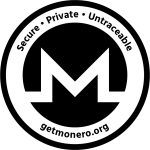 |
PNG AI |
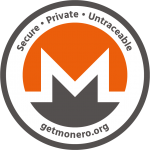 |
PNG AI |
 |
PNG AI |
 |
PNG AI |
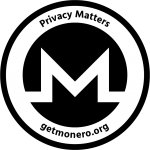 |
PNG AI |
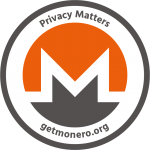 |
PNG AI |
 |
PNG AI |
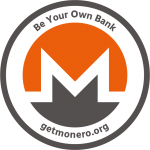 |
PNG AI |
Comments
Donations
If you found this useful, please consider a donation. Thanks!
Monero Donation Address:
46NKXEmT4KwE3HR31CFK4Jc9FpTMnQLjbU9n7ZAVWwBy4CKeSwfUpA3g1aaUgw82SFNUSRQFZuKjTV4AmfppW4qmF7ALJYf
Tutorial: How to use Monero from a Live USB (Beginner’s Guide)
Overview
- Hardware Requirements
- Create Live USB with Ubuntu Mate and Etcher
- Boot from Live USB
- Create Encrypted USB with GNOME Disks
- Create Wallet with Monero GUI and Remote Node
- Backup Wallet with 7z and Dropbox
- Test the Backup
- Normal Usage
- Conclusion
- Comments
Hardware Requirements
- x64 computer that can boot from a USB flash drive
- Most modern Windows and Mac computers should work
- Chromebooks are beyond the scope of this tutorial
- Two USB Flash Drives
- USB 3.0 preferred
- At least 8 GB
- Recommended: Samsung Fit 32GB USB Flash Drive
- USB Hub (optional)
- Not needed if your computer has enough USB ports
- USB 3.0 preferred
- Recommended: Anker 4-Port Ultra Slim USB Hub
- Linux Compatible USB WiFi Adapter (optional)
- Not needed if your existing WiFi device already works well with Linux
- Recommended: CanaKit Raspberry Pi WiFi Adapter
- USB Mouse (optional)
- Not needed if your existing touchpad or bluetooth mouse already works well with Linux
- Recommended: AmazonBasics 3-Button Mouse
Create Live USB with Etcher
- Download an Ubuntu MATE .iso file from https://ubuntu-mate.org
- I prefer the 64-bit LTS version
- Download and install Etcher from https://etcher.io
- Launch Etcher and select the Ubuntu MATE .iso file
- Insert USB flash drive and select it
- Important: Make sure to select the correct drive. You do not want to accidentally erase the wrong drive.
- Click "Flash!" and wait for it to complete
- Shutdown computer
Boot from Live USB
- Power on the computer while the Live USB is plugged in
- During startup, press the key that will display a list of bootable devices
- For Windows, you usually press a specific function key ranging from F1 through F12 during startup
- For Mac, you usually press the "Option" key during startup when you hear the chime sound
- Select the Live USB from the list of bootable devices and Ubuntu MATE will start
- Choose "Try Ubuntu MATE"
- Close the welcome message
Create Encrypted USB with GNOME Disks
- Launch Gnome Disks
- Insert USB Flash drive and select it in Gnome Disks
- Important: Make sure to select the correct drive. You do not want to accidentally erase the wrong drive.
- Format the USB Flash drive using "LUKS + Ext4"
- Choose a strong passphrase
- Format the drive and wait for it to complete
- Important: Only open the encrypted USB from the live USB
Create Wallet with Monero GUI and Remote Node
- Insert USB WiFi adapter if needed
- Connect to the internet
- Download the Monero GUI for Linux from https://getmonero.org
- Copy the compressed Monero GUI .bz2 file to your encrypted USB
- Extract the .bz2 file to your encrypted USB
- Run Monero GUI with start-gui.sh
- Go to https://moneroworld.com to find a remote node
- Enter a custom daemon address you got from moneroworld like these…
- node.xmrbackb.one:18081
- node.moneroworld.com:18089
- Create a new wallet and give it a name
- Store your wallet on your encrypted USB
- Choose a strong passphrase
- You can use the same passphrase that you used to unlock the encrypted USB
- Wait for the "Network status" to go from "Synchronizing" to "Connected"
- Important: Do not start funding your wallet until you have properly backed it up and restored it successfully
- Important: Only open your Monero GUI from the live USB
Backup Wallet with 7z and Dropbox
- Close Monero GUI if it is still running
- Go to the wallet folder on your encrypted USB
- Compress the wallet folder with 7z
- Choose a strong passphrase. You can use the same passphrase that you used to unlock the encrypted USB.
- Choose "Encrypt the file list too" to prevent anyone knowing what is inside the .7z file
- Important: Only open the .7z file from the live USB
- Upload the .7z file to Dropbox
- Sign up for Dropbox if you don't already have an account
- Important: Your encrypted USB, Monero GUI, and 7z file may use the same passphrase since they are only opened using the live USB. Your Dropbox password should be different since Dropbox is used on devices other than the live USB.
- Download the .7z file to your phone using the Dropbox app and the "Available offline" option
Following the 3-2-1 Backup Rule, you should now have 3 copies of your .7z file in the following places…
- Local copy on your encrypted USB drive
- Local copy on your phone
- Remote copy on Dropbox website
Test the Backup
Let's imagine your USB drives and phone are no longer available due to a natural disaster.
Let's say you already did the following…
- Recreated the live USB
- Booted from the live USB
- Recreated the encrypted USB
- Downloaded Monero GUI to encrypted USB
Here's what you would do to restore your wallet…
- Copy the backed up .7z file from Dropbox to your encrypted USB
- Extract the .7z file to your encrypted USB
- Run the Monero GUI and connect to a remote node
- Choose "Open a wallet from file" and select the extracted .keys file
Normal Usage
Now that you are confident the backup works, you can start funding your wallet.
From now on, all you need to do is…
- Boot from the Live USB
- Run the Monero GUI from the encrypted USB
- Connect to a remote node and open the .keys file
Important: If you want to just check your balance to make sure the Monero is still in there, you don't need to backup your wallet folder again. However, you will need to backup the wallet folder again with 7z and copy it to Dropbox and your phone if you make changes to the wallet like sending/receiving new transactions.
Conclusion
Your day to day operating system has more chance of being infected with malware. Since the live USB is non-persistent, it does not save any changes to the operating system. It is like booting from a freshly clean installed operating system every time which is less likely to contain malware. Also since it is non-persistent, a second encrypted USB is needed to secure the Monero wallet files.
Some people say all you need to backup is your seed. However, backing up just your seed does not save all transaction details.
Restoring from seed also takes much longer if you simply want to check your balance from time to time.
There is a more secure procedure for advanced users that involves air gapped cold storage wallet, view only hot wallet, offline/online transaction signing, key images for balance, running your own remote node over tor, and two-factor authentication with keepass, but that is beyond the scope of this tutorial for beginners.
If you found this useful, please consider a donation. Thanks!
Monero Donation Address:
46NKXEmT4KwE3HR31CFK4Jc9FpTMnQLjbU9n7ZAVWwBy4CKeSwfUpA3g1aaUgw82SFNUSRQFZuKjTV4AmfppW4qmF7ALJYf
Comments
Meal Replacement Guide
Overview
- Introduction
- Calculate Calories
- Meal Timing
- Cleaning
- Measuring Progress
- Conclusion
- Comments
Introduction
Meal replacements have been around for a long time. They have been mostly targeted for special use cases like…
Recently, a product called Soylent has made it trendy for everyday normal people to use meal replacements. The creators had very successful crowdfunding and venture capital funding which you can see here.
Since then, many competitors have been created. 'Blendrunner' is a site that compares them all here.
I chose Plenny Shake Vegan because it's the least expensive one that doesn't contain lactose and is available in the US. Shipping takes about one week.
An average person needs about 2,000 calories daily. Plenny Shake costs about $6 for 2,000 calories, so that's about $2 for one meal.
Every meal doesn't need to be Plenny Shake. Although I've been doing only Plenny Shake for all my meals since March 20, 2017, I do not recommend doing it 100% right away. I suggest starting off just replacing breakfast and getting used to the convenience. Work your way up if you want.
Calculate Calories
An average person needs about 2,000 calories. However, we all have unique calorie needs. You can calculate your specific daily calorie needs here.
Take the number that you calculated and divide that by 3 to get the amount of calories needed for one meal.
For example, if you calculated 2,000 calories, you would need about 667 calories for one meal.
According to the Plenny Shake Vegan nutrition label here, 100 grams of Plenny Shake contains 405 calories. That's about 4.05 calories per gram.
Take the amount of calories you need for one meal and divide that by 4.05 to get the amount of Plenny Shake needed in grams.
For example, if you needed 667 calories for one meal, you would need about 165 grams of Plenny Shake for one meal.
The most accurate way to measure is using a food scale like this. Get a shaker bottle like this 28 ounce one for average sized meals or this 45 ounce one for larger meals. Zero it out on the food scale. Add the Plenny Shake powder until you get the weight in grams you calculated for one meal.
Shaker bottles have measurement lines in ounces on the side. For water, I suggest noting the number of ounces the Plenny Shake powder takes up and doubling it. You can experiment with adding more or less water to your preference of being thicker or more watery, but doubling the number is a good starting point.
For example, if you added 165 grams of powder, and it went up to the 12 ounce line on the shaker bottle, I would add water until it measures 24 ounces.
You'll still need additional regular drinking water not mixed with the powder. Also, sugar free gum like this is recommended after the meal.
You can meal prep if you are on the go. Make sure the shaker bottle with the powder inside is sealed. You'll also need a vacuum insulated water bottle like this or this with ice and enough water for mixing and drinking.
Just put everything in a bag and it's ready to go anytime. If you are doing 100% Plenny Shake, you can meal prep with three sets of shaker and water bottles like this.
If you are only doing Plenny Shake for one meal, you can use calorie tracking apps like this to calculate the calories for your other meals to make sure you are reaching your daily calorie goal.
Meal Timing
If your calculations are correct for one meal, you should be able to go 5 hours between meals.
If your goal is to lose body fat, you can reach ketosis (fat burning state) in your sleep. Here's an example schedule.
- 05:00 am – Wake Up, Meal Prep, Workout
- 07:00 am – Breakfast
- 12:00 pm – Lunch
- 05:00 pm – Dinner
- 10:00 pm – Sleep
In this example, there is an intermittent fasting period between 5:00 pm and 7:00 am where you go 14 hours without eating anything. Since you've been eating every 5 hours, you'll go to bed starting to feel hungry, but you'll wake up not hungry. This is possible because your body is using your stored fat for energy as you sleep. Working out on an empty stomach will also help use energy from your fat instead of from recently eaten food.
Cleaning
I try to rinse the bottles right after each use. Plenny Shake comes off the shaker bottles fairly easily. Shaking hot water inside several times and rinsing the spout area immediately after use then air drying is usually enough.
Sometimes if I have a busy day, I end up washing all of them right before I go to sleep. Those times, I'll do a deep clean using vinegar and a bottle brush since they've just been sitting all day unwashed.
Be sure to let the shaker bottles completely dry before using them. You do not want moisture trapped inside. When in doubt, do a smell test before use. If it smells bad, you need to do a better job cleaning.
Measuring Progress
You can use a weight and body fat scale like this to keep track of your progress.
For inspiration, you can use this body search site to find photos of people who are similar to your body goals.
Conclusion
Pros
- Saves time. It only takes 30 minutes of my day. That's including meal prep, drinking, and clean up. Also no travel or waiting in line for shopping since it gets shipped directly to me.
- Calorie Counting is easy.
- Inexpensive. Cheaper than fast food and you don't need to refrigerate, cook, or waste food.
Cons
- People think you are weird.
- You may need to buy new clothes if your weight changes drastically.
- It takes awhile to get used to the taste and mouth feel. It feels grainy like drinking wet sand.
Comments
Tutorial: How to Trim a Video without Transcoding using Avidemux
Video Demo
Overview
- Download and install Avidemux
- Open the video you want to trim in Avidemux
- Select and delete parts that you want removed
- Save as a new video
- Review the trimmed video
- Conclusion
Download and install Avidemux
Avidemux is a free, open source, and cross platform (Windows, Mac, Linux) video editing app. It is available to download here.
Open the video you want to trim in Avidemux
In the video demo above, I opened the short film Big Buck Bunny in Avidemux to trim off the beginning and end. I got the 1080p h.264/aac mp4 version of Big Buck Bunny from here.
Select and delete parts that you want removed
- To trim the beginning, scrub the video near where you want to make the initial cut
- Use the “Previous Intra Frame” button and “Next Intra Frame” button to find an I‑frame to cut on
- Press the “Set Marker B” button and Avidemux will automatically “Set Marker A” to the beginning of the video
- Press “Delete” and it will remove everything between Marker A and Marker B which would be the beginning of the video
- To trim the end, scrub the video near where you want to make the next cut
- Again, use the “Previous Intra Frame” button and “Next Intra Frame” button to find an I‑frame to cut on
- This time, press the “Set Marker A” button and Avidemux will automatically “Set Marker B” to the end of the video
- Press “Delete” and it will remove everything between Marker A and Marker B which would be the end of the video
Save as a new video
- Make sure “Video Output” is set to “Copy”
- Make sure “Audio Output” is set to “Copy”
- Under “Output Format” choose “MP4v2 Muxer”. I suppose you can choose a different “Output Format”, but for compatibility’s sake, I like MP4v2 which most modern devices can play.
- Press “Save”
- Give the new video a unique name, so you don’t overwrite the original
Review the trimmed video
- Open the newly trimmed video in your favorite media player. I prefer VLC.
- Check to make sure it’s the way you wanted it
Conclusion
I like using this method when I download music videos from YouTube. Sometimes, the videos have really long intros and outros that I want to trim off. Then, I randomly play the trimmed videos on my Kodi HTPC to create my own custom pseudo music video channel that is free from ads and overly long intros/outros.
Pros
- Keeps the original quality. Doesn’t suffer from generation loss
- Since you’re doing a lossless copy of just the parts you want, it’s much faster creating the trimmed video without having to transcode
Cons
- Since you have to cut on an I-frame, you can’t select an exact timecode to cut on
- It would be faster if you could just select the part of the video you want and invert the selection to delete, but Avidemux doesn’t have that option
Comments
License
To the extent possible under law, Phloating Man has waived all copyright and related or neighboring rights to the article “Tutorial: How to Trim a Video without Transcoding using Avidemux“ which means you are free to share, remix, and use this work commercially without attribution or permission.
Thanks
If you enjoy my work, please click here. Thanks!
Ads
Hate ads? Try uBlock Origin.
Phloating Man’s Project M 3.02 Setup Guide
Project M 3.02 ISO
Here are a few ways to get the Project M 3.02 ISO…
- Torrent
- Copy from a friend
- Create Your Own from a Brawl ISO
Netplay
Here’s what you’ll need to play over the internet…
- Project M 3.02 ISO mentioned above
- Computer (i5 or better recommended)
- Ethernet Cable
- Gamecube Controller
- MAYFLASH PC051 GC Controller Adapter for PC USB
- Dolphin 4.0-648 Wii Emulator
A detailed tutorial can be found here. These are the general steps…
- Install Dolphin
- Optimize Dolphin for Project M
- Setup the Gamecube Controller
- Browse for the Project M 3.02 ISO
- Join or host a netplay game
Here are some ways to find people to play against…
- Send a message to a friend who also has Netplay.
- Signup for an account at the Netplay Ladder Matchmaking site.
- Post a message looking for players in your Regional Project M Facebook Group.
Wii
Here’s what you’ll need to play on a Wii without having to use the sensor bar, Wii remote, or disc…
- Wii
- Project M 3.02 ISO mentioned above
- Wii Backup Manager
- USB Flash Drive (at least 8GB)
- USB Loader GX
- Priiloader
Here are the general steps…
- Mod your Wii using the CompleteSoftmodGuide site.
- Copy your Project M 3.02 ISO to a USB flash drive using Wii Backup Manager
- Setup Priiloader to automatically boot the Wii into USB Loader GX using this video tutorial
- Play Project M from the USB Loader GX menu
Related
If you enjoy my work, please click here. Thanks!
NorCal Project M Design

Downloads
DIY
- InkJet Iron-On T-Shirt Transfer via Amazon
Ready Made
- Clothing with this design via Spreadshirt
Source
I decided to create this design in an attempt to create some hype in the the NorCal Project M competitive scene. Feel free to remix it.
- Titillium Web font via Google Fonts
- Project M Logo via Project M Back Room homepage
- Smash Ball via reddit user TsukoGakki
I picked the color gold because California is known as the golden state. I replaced the letter O with the smash ball. I tried to make the smash ball stand out more by placing it on top of the letter N and underneath the letter R. The letters are sheared about 9 degrees to match the slant on the smash ball.
Comments
- Nor Cal Project M Facebook
- /r/ssbpm
- Smashboards (Pacific West)
Related
If you enjoy my work, please click here. Thanks!
Budget Friendly Videography Kit for Beginners 2014
Overview
Camera
At the heart of every videography kit is the camera. Here are some common features that videographers look for.
- Full Manual Control (aperture, shutter, ISO, focus, white balance)
- Interchangeable Lenses
- 1080p24 for that “Film Look”
Here are three currently in production and relatively inexpensive camera choices that have those features.
 |
 |
 |
|
| Camera | Canon EOS Rebel T3i/600D 18-55mm f/3.5-5.6 Lens |
Panasonic Lumix DMC-G6KK 14-42mm f3.5-5.6 Lens |
Sony A3000 18-55mm f/3.5-5.6 Lens |
| Price | ~$500 USD | ~$530 USD | ~$300 USD |
| Lens Mount | EF-S and EF | Micro Four Thirds | E |
| Form Factor | DSLR | Mirrorless | Mirrorless |
| Articulating Screen | Yes | Yes | No |
| Crop Factor | 1.6x | 2x | 1.5x |
| Focal Reducer Compatible | No | Yes | Yes |
| Lossless Crop Zoom | 3x | None | None |
| Hack | Magic Lantern by Trammell Hudson |
None | None |
| Slow Motion | 720p60 | 1080p60 | 1080i60 |
| Recording Limit | 12 Minutes | Continuous until card is full | 29 Minutes |
| Memory Card | SD, SDHC, SDXC | SD, SDHC, SDXC | SD, SDHC, SDXC Memory Stick PRO-HG Duo |
| Verdict | The T3i is one of the most popular options out there which means there are tons of accessories, tutorials, and community support specifically for it. The 3x lossless crop zoom comes in handy. Magic Lantern unlocks many video features like auto movie restart and bitrate control. | If you value recording length above all else, then the G6 is a great option for you. 1080p60 is rare in an interchangeable lens camera at this price point. Being mirrorless lets you use a variety of lenses from different mounts via inexpensive adapters. Being mirrorless also lets you use a focal reducer which makes budget lenses have similar low light performance to premium lenses. | The Sony A3000 is one of the least expensive options out there which makes it a great learning camera to experiment with the basics of exposure and different lenses. The mirrorless advantages mentioned earlier apply here also. |
Audio
Good audio separates the professionals from the amateurs. A common workflow for videographers is to capture audio from an external audio recorder with a video mic or lav mic. Then in post, sync the audio from the external recorder with the internal camera audio either manually or automatically with something like PluralEyes.
 |
 |
 |
| Zoom H1 Audio Recorder | Rode VideoMic | Azden EX-503 Lav Mic |
| ~$95 USD | ~$150 USD | ~$20 USD |
| 1 AA Battery | 1 9V Battery | Phantom Power |
| microSDHC | ||
| Tripod to Shoe Mount Adapter |
Lighting
Capturing light is the essence of videography. You can achieve nice three point lighting with just the sun and a reflector.
 |
 |
 |
| Neewer 110cm 5 in 1 Collapsible Reflector | Neewer CN-160 LED Video Light | Cowboystudio Umbrella Continuous Triple Lighting Kit |
| ~$20 USD | ~$30 USD | ~$60 USD |
| 6 AA Batteries |
Support
For the love of all that is good in this world, whenever possible, please use a tripod unless your scene calls for handheld or shaky movement.
 |
 |
 |
| Ravelli AVTP Fluid Head Tripod | Vello Triple Shoe Mount V Bracket for Lights, Mics, and Audio Recorders | Gaffer Tape |
| ~$120 USD | ~$30 USD | ~$20 USD |
Conclusion
Nowadays, ~$1000 USD can get you a decent entry level videography kit.
If that’s out of your budget, consider buying used, refurbished, and/or discontinued cameras from sites like Amazon, B&H, KEH, Canon, LensRentals.com, BorrowLenses.com, and craigslist. An EOS M, T2i, or GH2 may be older, but they still offer full manual control, interchangeable lenses, and 1080p24 for a great price.
Comments
Related
License
To the extent possible under law, Phloating Man has waived all copyright and related or neighboring rights to the article “Budget Friendly Videography Kit for Beginners 2014“ which means you are free to share, remix, and use this work commercially without attribution or permission.
Thanks
If you enjoy my work, please click here. Thanks!
Ads
Hate ads? Try Adblock.
Bitcoin: Strength in Numbers
Downloads
- Vector (svg)
- Letter 1-up (pdf), 2-up (pdf), 4-up (pdf), 10-up Business Card (pdf)
- 1080p (png, jpg)
- Poster 36×24 (pdf)
DIY
Ready Made
 |
 |
| T-Shirt via Zazzle (~$15) | Poster via Zazzle (~$25) |
Source
 |
 |
 |
“Strength in Numbers” |
| Bitcoin logo by bitboy via Bitcoin Talk Forum with Public Domain license. | Safe design by Javier Cabezas via The Noun Project with CC BY 3.0 license. | Font by Dalton Maag via Google Web Fonts with Ubuntu Font license. | Motto via Miner_Willy on /r/bitcoin. |
Comments
License
Normally, I’d use the CC0 waiver which dedicates my work into the public domain. However, some of the assets in this design require attribution, so I’ll be using CC BY 3.0 for this one.
“Bitcoin: Strength in Numbers” by Phloating Man is licensed under a Creative Commons Attribution 3.0 Unported License which means you are free to share, remix, and use this work commercially without permission as long as you provide attribution.
Related
- Seeing Pi Chart
- If you can’t open a regular bank account due to ChexSystems or want to have a separate account for Bitcoin, here’s how to get a “free” checking account to use with Coinbase (US Only)
If you enjoy my work, please click here. Thanks!



